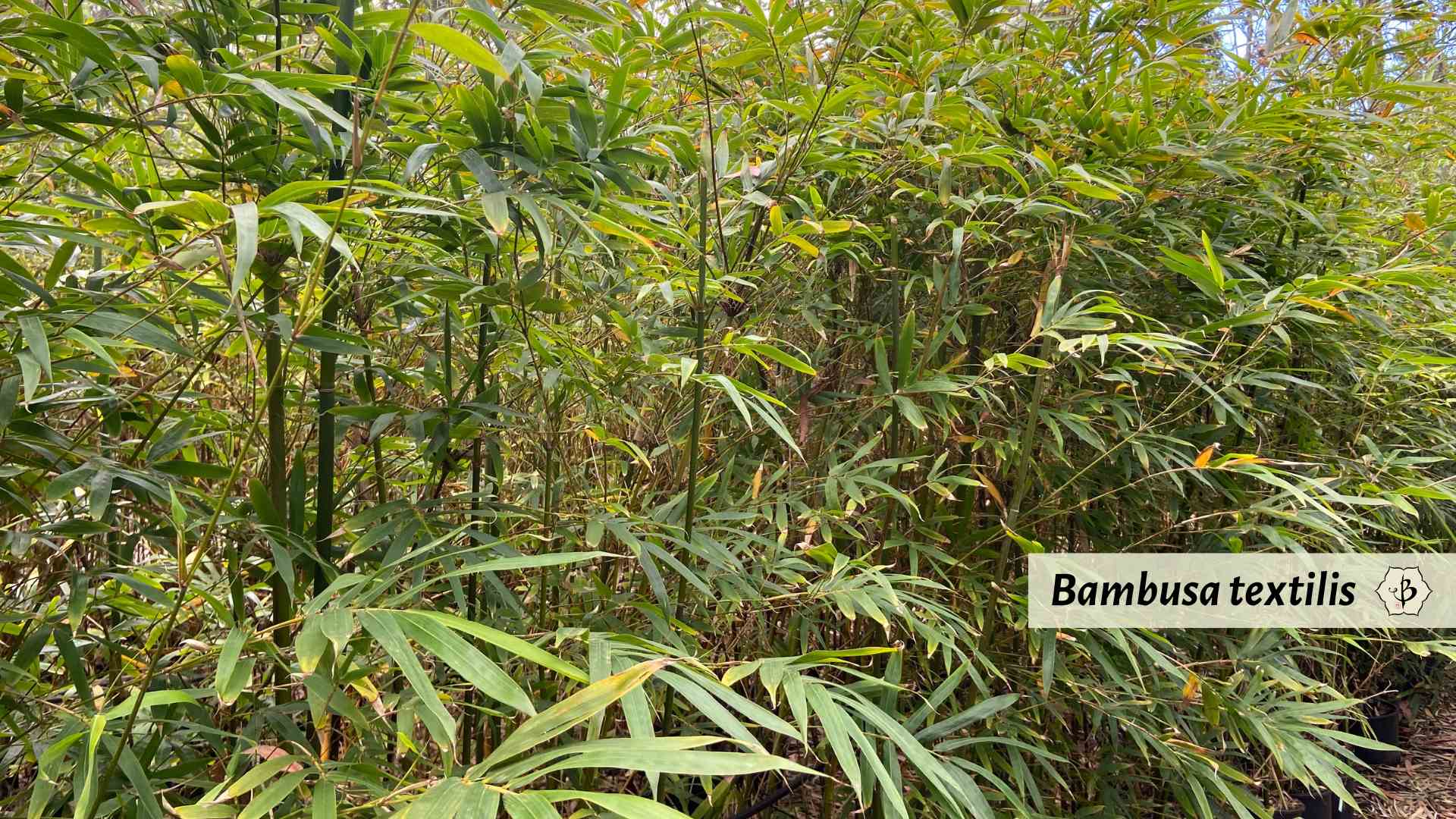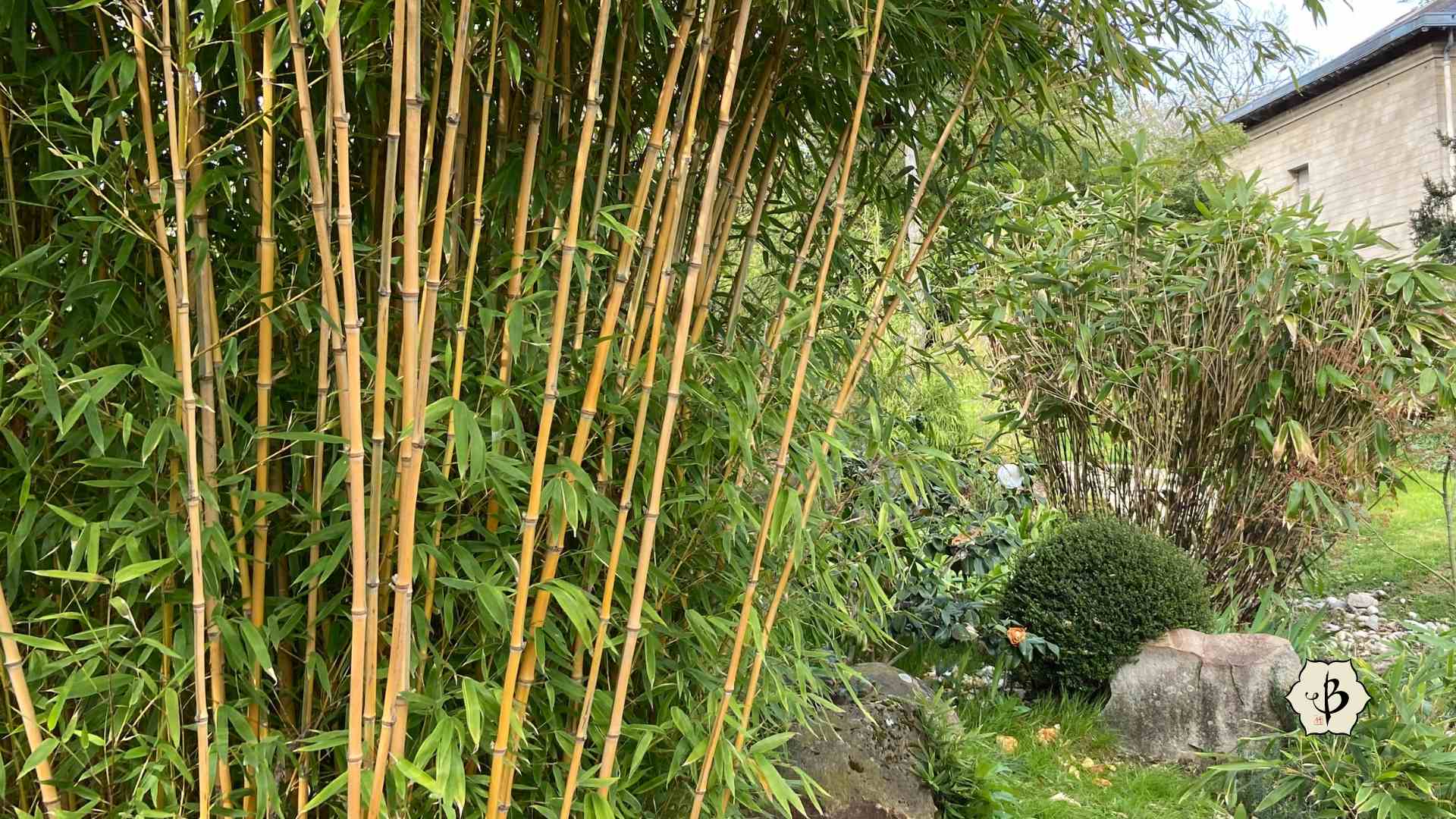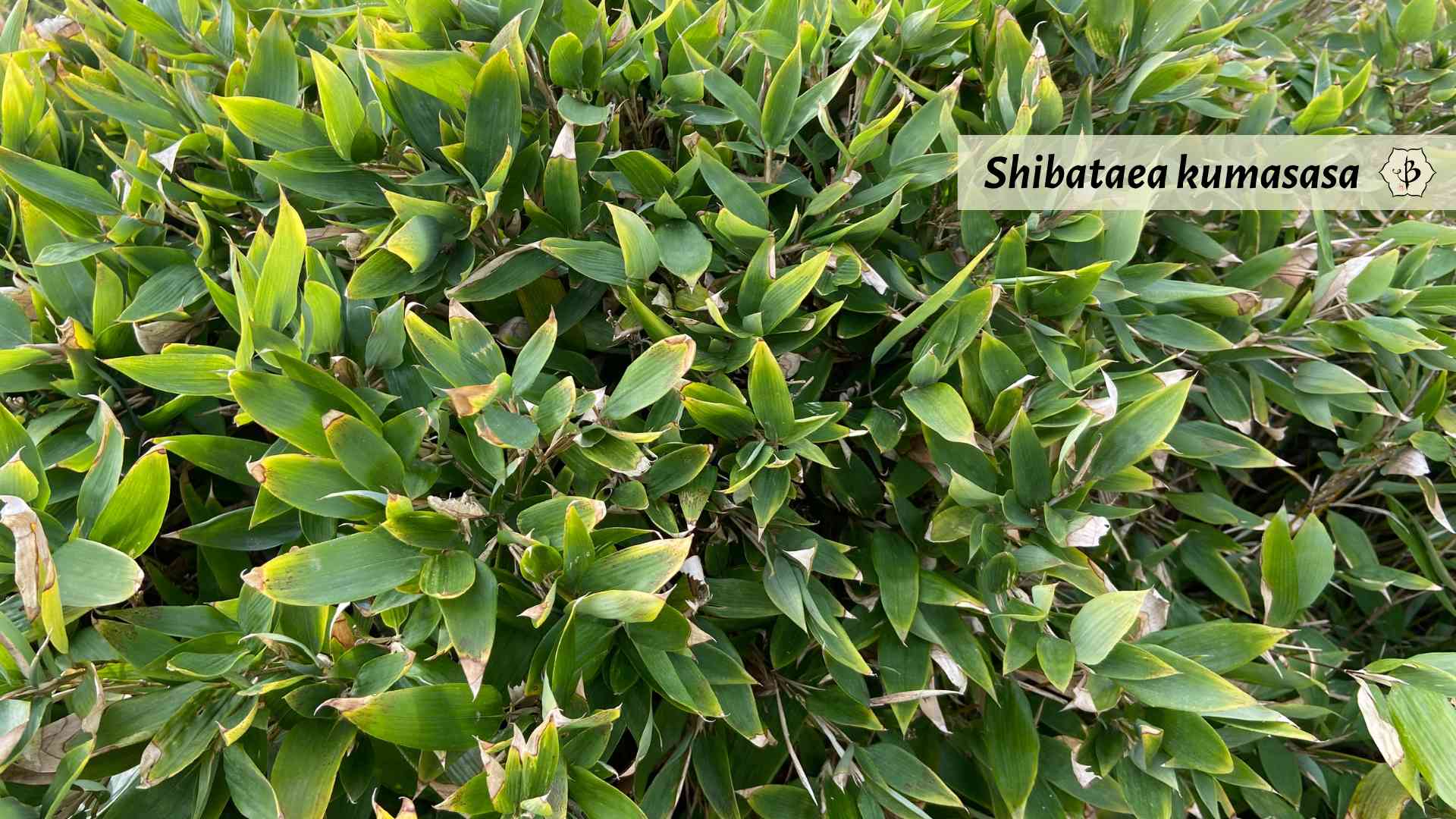The amazing and incredible properties of bamboo have earned this useful plant all sorts of superlative nicknames. Because of its remarkable tensile strength, it sometimes goes by the name “Vegetal Steel”. In developing countries and near the equator, where tropical bamboo can truly flourish, they often call it “Green Gold”. Many of us, who are familiar with bamboo’s astonishing growth rate and versatility, simply refer to it as the “Miracle Grass” or the “Wonder Plant.” And sometimes bamboo is known as the “Living Fence”.
With its thick, upright culms and its dense, green foliage, bamboo often acts as a Living Fence or a natural border between properties. Instead of erecting an unattractive chain-link fence, or installing a row of wooden planks that will need to be treated and painted, you can grow bamboo like a hedge and it will form the perfect boundary. If you select the right species, your bamboo will grow fast enough and tall enough to provide adequate privacy and look much nicer around your garden than most man-made structures.
NOTE: This article first appeared in October 2021, most recently updated in July 2024.
The bamboo hedge as a living fence
Bamboo’s natural growth habit, having tall, straight poles and abundant foliage with minimal branches, provides the ideal shape for a hedge or a privacy screen. In order to create a living fence, the main task of the gardener will be to keep the bamboo in a long, narrow patch.
Left to its own devices, bamboo normally radiates outward, slowly or quickly, depending on the species. So if you want to make your bamboo into a hedge, you’ll need to plan and plant accordingly.
To do this, you’ll want to place some kind of root barrier in the ground to confine the plant to a designated area. Or dig a containment trench that allows you to monitor and curtail the spread of roots. With these methods, just be sure to dig in a good, straight line. This will ensure a neat and orderly fence line, but without the pruning and shaping that most hedges require.
Another option is to keep the bamboo in large containers or planter boxes. Bamboo is generally happier when it’s directly in the earth, but containers can also be effective and attractive. Either way, containing the roots is the key to keeping the plant under control and maintaining a hedge-like shape.
For good coverage and a sufficiently dense hedge that will fill in within a couple of years, you’ll want to space plants about two to three feet apart. Smaller plants, in 2-gallon pots, could be a little closer than that. Bigger plants, in 3-gallon pots, can be somewhat more spread out.
The specific growth rate really depends on the species of bamboo and its growing conditions. But as a general rule, it takes a couple years for a bamboo plant to get really well established. After three years, the roots will have spread out a bit and the new shoots should be close to producing full-sized culms. Shoots that come up in the first two years will grow to be smaller and thinner. You’ll probably want to remove those early shoots after a few years, as the bigger canes start filling in.

Selecting the bamboo species for your living fence
To create an effective fence, you also need to select the right species. With more than 1,400 varieties to choose from, picking out the right type of bamboo is not always easy. For best results, you have to evaluate the growing conditions and consider what sort of features you want from your bamboo. Then you have to go through the catalogs and species lists to find a bamboo variety that has all those desirable characteristics.
Also take a look at these articles on Shopping for Live Bamboo and Choosing the Best Bamboo.
So what are the best properties for a bamboo hedge or living fence?
Growth rate
In most cases, when you plant a privacy screen, you want a plant that will grow quickly and fill in the gaps. The longer you have to wait for it to grow, the longer you will have to suffer without privacy. And whether you like to sunbathe au natural in your garden, or just host a lot of backyard barbecues, everyone enjoys a little privacy.
For this reason, the most popular bamboo screens tend to be the fast-growing running varieties of bamboo. Unlike the clumping types of bamboo, running bamboo can spread quickly to fill in an area. But at the same time, you have to be careful that the running bamboo doesn’t “overrun” your garden.
Some gardeners will prefer to plant a row of clumping bamboo and wait for them to fill out. If you don’t need to create a complete, uninterrupted screen, or if you’re not in a hurry for it to fill in, this can be a good option. Many ornamental varieties of Bambusa are effective for hedges. Many would rather do this than have to contend with the tenacious rhizome roots of a running bamboo, two or three years down the road.

Size and shape
Some varieties of bamboo will only grow a few feet tall, and others can easily grow well over 50 feet. So there are bamboos that make a nice short hedge along a walkway, and then there are taller bamboos that provide privacy similar to a 6 or 8-foot fence. But if you want privacy all the way up to your second-story bedroom window, there are other options. With bamboo, anything is possible!
The size and shape of the poles are also worth thinking about. For a tall privacy hedge, you’ll probably want a bamboo with straight, upright canes. Certain bamboo varieties have very interesting canes with irregular shapes and uneven patterns, but these are probably less desirable for a hedge. However, if you prune back the foliage on the lower few feet of the bamboo, the irregular culms can add some real interest to the hedge.
You can also choose between slender canes (an inch or less in diameter) and thicker canes (3, 4, or 5 inches in diameter). This will mostly just be a matter of personal preference. Although, if you’re planning a short hedge, just 4 or 5 feet tall, then the very thick poles will not really be a practical option.
Foliage
One of the most important features of a good privacy hedge is some thick, dense foliage. Without tightly packed leaves, the bamboo won’t really provide a satisfying level of privacy. It’s also difficult to create a well-defined, carefully shaped hedge unless the foliage is very dense.
Climate
Finally, whenever you’re selecting a bamboo plant for your garden, you need to be sure it’s suitable for your climate. Some bamboo varieties prefer or even require a tropical or subtropical climate. Others can survive, or even thrive, through a snowy New England winter. So always pay attention to the weather requirements before you purchase any bamboo.
Best bamboo species for living fences
There are dozens of varieties of bamboo that will work for a living fence, but here’s a partial list including some of the most common and popular choices. If you know of a good bamboo hedge that we overlooked, please let us know in the comments section.
Arundinaria funghomii: Thin, straight canes of this running bamboo grow close together and with lots of leaves, making it an ideal hedge or screen. Native to China, some authors classify this bamboo as Pseudosasa cantorii. Grows 20-30 feet tall with 1-inch culms. Cold hardy down to about 0º F.
Bambusa malingensis ‘Seabreeze’: This popular species from Southern China is great in a variety of conditions. As the name suggests, it’s very tolerant of winds and salty air by the seaside. Its tight clumping habit and lateral branches also make for a dense and fast-growing privacy hedge, often growing up to 30 feet tall or more. Seabreeze also happens to be one of the more drought-tolerant bamboo species. But like most varieties of Bambusa, it’s not especially cold-hardy. Temperatures below 20º F will usually result in frost damage.

Bambusa multiplex, or Hedge bamboo: Ideally suited for privacy screens, as the name would suggest with 10-20 foot upright poles. This species has also a number of cultivars, including ‘Golden Goddess’, a very popular ornamental for its manageable size and greater hardiness. They only grow about 10 feet tall, with half-inch culms, cold hardy to 15-20º F. Not to be confused with Phyllostachys aurea, also called Golden Bamboo. Another subspecies, ‘Alphonse Karr’, is among the most highly sought after of all ornamental bamboos. Distinctive green stripes on bright yellow culms give this variety a stunning appearance (see image below). Healthy plants can get 20-30 feet tall, with 1.5-2 inch canes. Tolerates temperates as low as 15-20º F.
Bambusa textilis ‘gracilis’: An especially popular and “graceful” variety of clumping bamboo, native to the warmer, tropical climates. A compact growth habit gives this bamboo a small footprint and makes it easy to contain. The upright structure is very attractive and its dense vegetation offers great privacy. Best in zone 8 or above.
Bashania fargesii: Long, sturdy culms have earned this the name of “Windbreak Bamboo”. Leaves are long and thick, and the culm internodes are unusually long. This cold-hardy variety is good in zones 7-10, and gets about 20-25 feet tall, with culms up to 2″ thick. Beware, this species is especially fast-spreading and capable of becoming invasive.
Fargesia dracocephala: “Dragonhead Bamboo” has thick culms growing to about 10 feet, with a thick, weeping leaf canopy that can provide a good privacy hedge. Bamboos of this genus are clumping and unusually cold tolerant. Not recommended for hot, humid climates, but hardy down to -10º F.

Phyllostachys aureosulcata ‘Spectabilis’: A fast-growing, medium-sized bamboo with some interesting features, including a yellow stripe and occasional zigzags in lower sections of the culms. Grows to about 25′ tall and 1’5″ thick with dense foliage. Cold hardy to around -5º F.
Phyllostachys bissetii: A very common variety for privacy screens because it grows so quickly, but be careful, it can also become invasive. Like most members of the genus Phyllostachys, it is a cold-hardy runner. This variety can get up to 40′ tall with culms about 2″ in diameter, withstanding freezing temperatures down to -10º F.
Phyllostachys bambusoides: Giant Japanese timber bamboo, this variety can provide privacy all the way up to the second and third story windows. Smooth, beautiful culms can get 50-70 feet tall, depending on conditions, with a culm diameter of up to 5″. These are running varieties, but not especially aggressive. Cold hardy down to 0º F, but they grow larger in warmer climates.
Phyllostachys humilis: A smaller member of the genus Phyllostachys, only growing 10-15 feet tall, depending on the climate, with culms less than 1″ thick. But despite the size, it can spread aggressively, so keep an eye on the roots. With thick, green foliage, this variety is ideal for hedges and shorter privacy screens. Cold hardy down to around 0º F.
Phyllostachys viridis ‘Robert Young’: An exquisitely attractive variety with green and yellow stripes on its poles, this species can also grow to an impressive but manageable size, up to 40 feet tall with culms up to 3″ in diameter. Depending on how much privacy you need, you may want to prune back the leaves on the lower portions (bottom 3 or 4 feet) to show off the beautifully variegated canes. Cold hardy down to 5º F.
Pseudosasa japonica: Known as “Arrow bamboo” for its straight and slender culms, it also makes an especially attractive screen, with large, dark green leaves. Ideal for shorter screens and hedges, with canes growing 15-20 feet tall, and less than an inch thick. Spreads rather aggressively and cold hardy to about 5º F.
Shibataea kumasaca: A less common variety, but perfect for low hedges. Foliage — made up of short, stubby leaves — is unusually dense, with pencil-thin culms that only get about 5-7 feet tall. Despite its diminutive size, this species is a runner and may become invasive if not properly contained. Tolerates shady areas and cold hardy down to 5º F.

Further reading
If you enjoyed this article about living fences, please consider sharing the blog post or subscribing to our mailing list. You might also be interested in some of the following links:

























